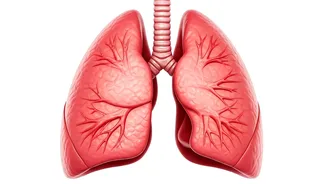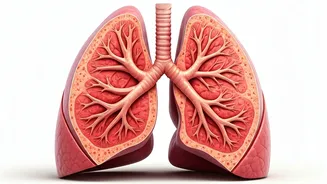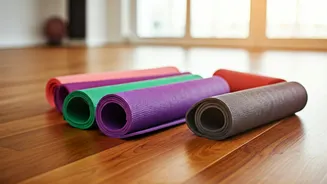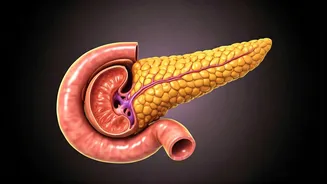Diaphragmatic Breathing
Diaphragmatic breathing, often called belly breathing, is a fundamental technique for strengthening your lungs. It involves consciously using your diaphragm,
the primary muscle for respiration, to draw air deeply into your lungs. To practice this exercise, sit or lie comfortably. Place one hand on your chest and the other on your stomach. Inhale slowly and deeply through your nose, focusing on allowing your stomach to rise while your chest remains relatively still. This ensures the diaphragm is doing the work. Exhale slowly through your mouth, feeling your stomach fall. Repeat this for several minutes, several times a day. Diaphragmatic breathing can improve oxygen intake, reduce stress, and enhance overall respiratory function, making it a vital exercise for those looking to improve their lung health.
Pursed-Lip Breathing
Pursed-lip breathing is an effective method for slowing down your breathing rate and improving the exchange of oxygen and carbon dioxide. This technique is particularly useful for people with chronic lung conditions, but it can also benefit anyone seeking to improve their respiratory efficiency. To do this exercise, relax your neck and shoulder muscles. Inhale slowly and deeply through your nose for about two counts, keeping your mouth closed. Then, purse your lips as if you are going to whistle, and exhale slowly and gently through your pursed lips for about four counts. This creates a slight resistance that helps keep your airways open longer, allowing for better oxygen exchange and reducing breathlessness. Practicing pursed-lip breathing can help manage shortness of breath, increase endurance, and enhance your overall respiratory comfort.
Deep Breathing Exercises
Deep breathing exercises encompass a variety of techniques designed to increase lung capacity and promote efficient breathing. These exercises involve inhaling deeply and holding your breath for a short period before exhaling completely. One popular method is the 4-7-8 breathing exercise, where you inhale through your nose for a count of four, hold your breath for a count of seven, and exhale through your mouth for a count of eight. Repeat this several times. Another variation includes counting during each phase of the breath. These deep breathing exercises not only improve oxygen intake but also help to calm the nervous system and reduce feelings of stress and anxiety. Regularly incorporating these practices into your routine can lead to better lung function and a greater sense of well-being, especially beneficial during the winter months when respiratory challenges are more prevalent.
Cardiovascular Workouts
Engaging in cardiovascular exercises is essential for overall respiratory health. Activities like brisk walking, jogging, swimming, and cycling not only strengthen your heart but also improve the efficiency of your lungs. When you engage in these exercises, your body demands more oxygen, leading your lungs to work harder and become more efficient at extracting oxygen from the air. Regular cardiovascular workouts increase lung capacity and improve the exchange of oxygen and carbon dioxide, thereby enhancing respiratory function. Start slowly and gradually increase the intensity and duration of your workouts to match your fitness level. Aim for at least 150 minutes of moderate-intensity exercise or 75 minutes of vigorous-intensity exercise per week to maximize the benefits for both your heart and your lungs. These exercises are also great for boosting the immune system, essential during the winter to fight off respiratory infections.
Incorporate Yoga
Yoga combines physical postures, breathing techniques (pranayama), and meditation to enhance respiratory health and overall wellness. Yoga poses that open the chest and expand the lungs, like Cobra Pose (Bhujangasana) or Triangle Pose (Trikonasana), can significantly improve lung capacity and oxygen intake. Pranayama, the yogic practice of breath control, includes various breathing exercises designed to regulate and enhance your breath. Specific techniques such as alternate nostril breathing (Nadi Shodhana) can help balance the nervous system and promote relaxation. Regular yoga practice improves posture, strengthens respiratory muscles, and increases lung function. Whether you are a beginner or a seasoned yogi, integrating yoga into your routine provides multiple benefits for lung health, and its focus on mindful breathing can help manage stress and promote a sense of calm, essential for overall respiratory well-being, especially in winter.








